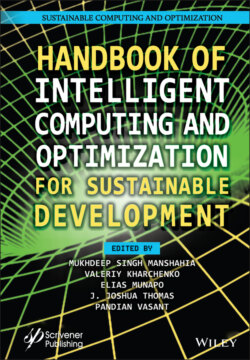Читать книгу Handbook of Intelligent Computing and Optimization for Sustainable Development - Группа авторов - Страница 128
5.3.2 Case Study 2: CSI Feedback for FDD Massive MIMO Systems
ОглавлениеA massive MIMO base station (BS) requires downlink CSI for achieving desired gains. The currently deployed systems dominantly function in FDD mode, and many frequency bands are allocated explicitly for FDD use [49]. In FDD mode, the CSI is estimated from the pilots sent by the BS at the UE side, and the estimated CSI is then fed back to the BS. Even if a satisfactory estimate of the channel is made, the frequency resources of the feedback channel could be exhausted by the large-scale CSI matrix. Hence, CSI feedback is a significant problem to be addressed mainly in the FDD massive MIMO case.
Existing techniques like compressed sensing, which makes use of the sparsity concept suffers from slow reconstruction time. It uses random projection which cannot exploit the structure of the channel altogether [20]. Data-driven DL approaches use a massive amount of data, which in communication application can be generated in real-time across an enormous number of users. The data sets generated by users and BSs in various environments can be helpful for the 5G networks to learn [50].
This case study uses NNs for compression of the channel information at UE and recovery of the same at the BS. The CSI matrix compression for feedback is similar to the unsupervised clustering problem [51]. It uses an autoencoder structure, as shown in Figure 5.5, where the encoder present at the UE converts the CSI matrix into a K-dimensional vector. This is the reduced representation of the original matrix. This K-dimensional vector is then transmitted as feedback to the BS, where the decoder converts the received vector back into its original form.
Figure 5.5 Autoencoder model for CSI feedback.
